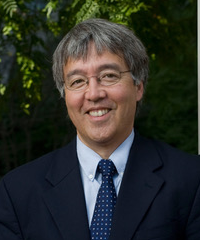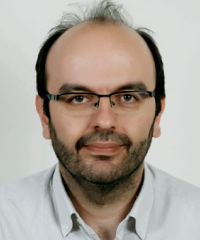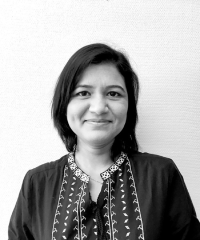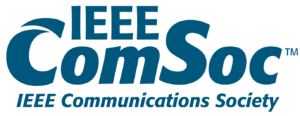Title: Network Modeling: Finding the Right Level of Abstraction
Abstract: For nearly fifty years, beginning with Kleinrock’s pioneering work on using queueing theory to model packet flows in communication networks, network modeling has adopted the individual packet as primary level of granularity for network modeling and analysis. With the advent of terabit-switching capabilities, information-centric networking, and data centers with complex workloads and hundreds of thousands of components, the time would seem ripe to raise the level of abstraction beyond the packet. In this talk, we identify higher-level modeling abstractions are already proving useful as well as new needed abstractions. But also we identify cases where packet-level models are still crucial in providing important insights.

Jim Kurose
(University of Massachusetts Amherst, USA)
Bio: Jim Kurose is a Distinguished University Professor in the College of Information and Computer Sciences at the University of Massachusetts Amherst, where he has been on the faculty since receiving his PhD in computer science from Columbia University. He received a BA in physics from Wesleyan University. He has held a number of visiting scientist positions in the US and abroad, including IBM Research, INRIA and the Sorbonne University. He is proud to have mentored and taught an amazing group of students, and to have received a number of awards for his research, teaching and service, including the IEEE Infocom Award, the ACM SIGCOMM Lifetime Achievement Award, the ACM Sigcomm Test of Time Award, and the IEEE Computer Society Taylor Booth Education Medal. With Keith Ross, he is the co-author of the best-selling textbook, Computer Networking: a Top Down Approach, now in its 7th edition. He is a Fellow of the ACM and the IEEE.
From January 2015 to September 2019, Jim was on leave, serving as Assistant Director at the US National Science Foundation, where he led the Directorate of Computer and Information Science and Engineering. While at NSF, he also served as co-chair of the Networking and Information Technology Research and Development Subcommittee of the National Science and Technology Council Committee on Technology, facilitating the coordination of networking and information technology research and development efforts across Federal agencies. In 2018, Jim also served as the Assistant Director for Artificial Intelligence in the White House Office of Science and Technology Policy.
Title: Softwarization and IoT evolution
Abstract: The Internet of Things (IoT), a main enabler for Industry 4.0, is considered as a system connecting myriads of people, things and services. IoT enables new large-scale applications with diverse constraints (e.g., limited resource availability or mobility) and requirements (e.g., ultra low delays). A main challenge is the evolution beyond large networks of sensing devices to multiple cooperating network deployments that implement context-sensitive communication and cloud processing strategies, through the seamless adoption of Softwarization technologies. The talk includes the following aspects: (i) a motivation of the above vision with two novel use-cases on smart-city and maritime contexts; (ii) a discussion on the evolutionary and clean-slate approaches to the IoT Softwarization; (iii) the missing elements and open issues in Software-Defined IoT and Edge Cloud technologies; and (iv) insights from our practical experience in relevant implementations and real experiments.

Lefteris Mamatas
(University of Macedonia, Greece)
Bio: Lefteris Mamatas is Assistant Professor in the Department of Applied Informatics, University of Macedonia, Greece. He leads the Softwarized & Wireless Networks Research Group (http://swn.uom.gr) in the same University. He worked as a researcher at the University College London (UK), Space Internetworking Center/Democritus University of Thrace (Greece), and DoCoMo Eurolabs (Munich). His research interests lie in the areas of Software-Defined Networks, Internet of Things, 5G Networks, and Multi-Access Edge Computing. He participated in many international research projects, such as NECOS (H2020), FED4FIRE+ OC4 (H2020), WiSHFUL OC2 (H2020), MONROE OC2 (H2020), Dolfin (FP7), UniverSELF (FP7), and Extending Internet into Space (ESA). He has published more than 60 papers in international journals and conferences. He served as a General Chair for the WWIC 2016 conference and the INFOCOM SWFAN 2016 workshop, as a TPC Chair for the INFOCOM SWFAN 2017, E-DTN 2009, IFIP WWIC 2012 conferences/workshops and as a Guest Editor for the Elsevier Ad Hoc Networks Journal.
Title: Network Operations and AI
Abstract: The Fifth Generation Mobile Networks (5G) are seen as a key enabler for diverse-natured industry verticals (such as automotive, manufacturing, mining, utility, health, etc.) by providing a platform to support heterogeneous sets of network quality requirements. The presentation will discuss how Artificial Intelligence and automation can support Telecom industry to manage the increased complexity, scalability, and diversity in its use cases. The work presents different aspects of the network operations of the future, done in an automated, proactive, and intent-driven fashion using different AI techniques.

Rafia Inam
(Ericsson, Sweden)
Bio: Rafia Inam is a senior project manager at Ericsson Research in research area Artificial Intelligence, Sweden. She joined Ericsson research in 2014 and worked on 5G for industries. She also worked as Single Point of Contact for Scania. Her research interests include 5G network slices and management, using AI for automation, use cases applied to 5G, service modeling for Intelligent Transport Systems, automation and safety for CPS, reusability of real-time software and ITS. She received her Ph.D. from Mälardalen University, Sweden, in 2014. Rafia has co-authored 38+ scientific publications and 34+ patent families.
Title: A Speed of Light Internet Service Provider
Abstract: A variety of network applications, including electronic commerce and games, are either enabled by or benefit greatly from low latency communications. Studies have shown, however, that over medium and long distances the time to send a packet from one city to another on the public Internet is typically more than three times larger than the lower bound implied by the speed of light in free space. Hence for applications like high-frequency trading, where the winner of a communications race receives all the benefits, special purpose networks have been deployed. For example, between New Jersey and Chicago a succession of networks has been deployed, first fiber-based and then microwave-based, with each network reducing latency by a fraction of a millisecond over the previous. This talk explores the possibility of using the same radio technology to build a network backbone spanning the 120 largest population centers in the United States. The design places radios on existing towers, using topographic maps to ensure line-of-sight connectivity between towers. The impact of weather on the network is evaluated using historical weather data. Our analysis suggests that it should be possible to achieve mean speeds of over 95% of the speed of light over medium and long distances at a transmission cost of under $1 per GB.

Bruce Maggs
(Duke University, USA)
Bio: Bruce Maggs received the S.B., S.M., and Ph.D. degrees in computer science from the Massachusetts Institute of Technology in 1985, 1986, and 1989, respectively. His advisor was Charles Leiserson. After spending one year as a Postdoctoral Associate at MIT, he worked as a Research Scientist at NEC Research Institute in Princeton from 1990 to 1993. In 1994, he moved to Carnegie Mellon, where he stayed until joining Duke University in 2009 as a Professor in the Department of Computer Science. While on a two-year leave-of-absence from Carnegie Mellon, Maggs was a founding employee of Akamai Technologies, serving as its first Vice President for Research and Development. In 2018 he was part of a large team that received the inaugural SIGCOMM Networking Systems Award for the Akamai CDN, and was named an ACM Fellow.Maggs is a professor at Duke University.
Title: Refurbishment of the IP Framework after 50 years of operations
Abstract: In the past decades, the Internet has been slowly “fragmented” into Many Networks (ManyNets) due to both technical and commercial reasons. Their incompatible addressing mechanisms hinder the interconnection among those networks. Current Internet Protocol (IP) that aims to connect regional academic and military networks was invented half a century ago. The original IP design philosophy including fixed address length, binding machines to specific locations, and many others might not be suitable for all networks. Furthermore, emerging applications like ARVR, holographic communications, etc. rises new requirements to the network and involves innumerable physical and virtual objects, which requires more efficient and customized network services. In this talk, a novel framework for future Internet protocol will be presented to tackle aforementioned challenges. The new framework will adopt variable-length and multi-semantic network addresses, and enables user-defined networking in order to support futuristic applications.

Zhe Lou
(Huawei Technologies, Germany)
Bio: David Lou graduated as Ph.D. in Electronic Engineering at Ghent University in 2005. In the same year he joined the Alcatel-Lucent Bell Labs as an Innovation Researcher. He had a leading involvement and management role in several European and national research projects (Giant, Smart Touch, Metaverse1, Mistra, Shift-TV, etc.), and standardization bodies (MPEG). In 2016 he joined Huawei Technologies as a Chief Researcher based in Munich, Germany. He is responsible for identifying high potential research directions, steering disruptive network innovation and coordinating collaboration with industrial and academic partners. His research interests mainly covers IoT/IIoT/I4.0, next generation industrial networking architecture, deterministic communication, video streaming and transportation, and immersive communication. He is the co-chair of the IIC Networking Task Group and has been actively involved in relevant standardization and industrial development activities. He has (co-) authored more than 30 scientific publications and white papers. He has been granted with more than 20 patents.














